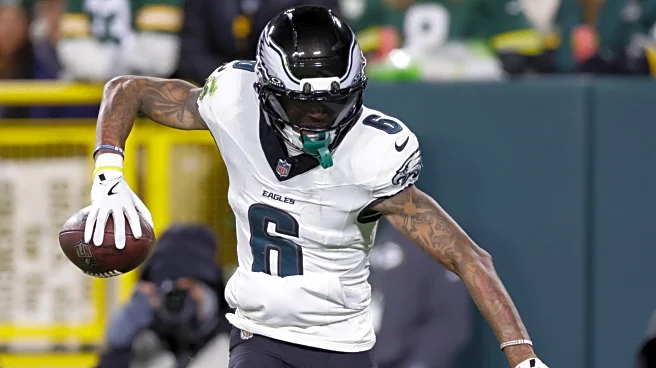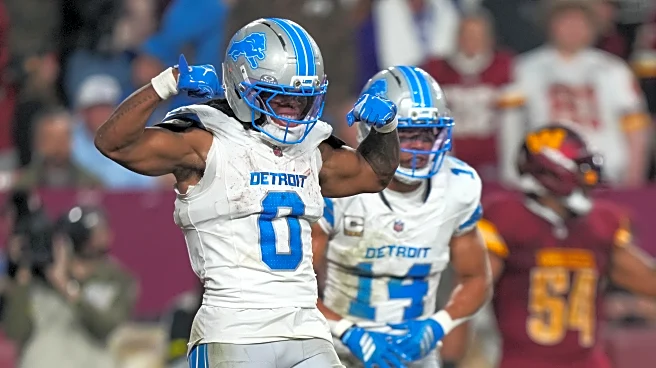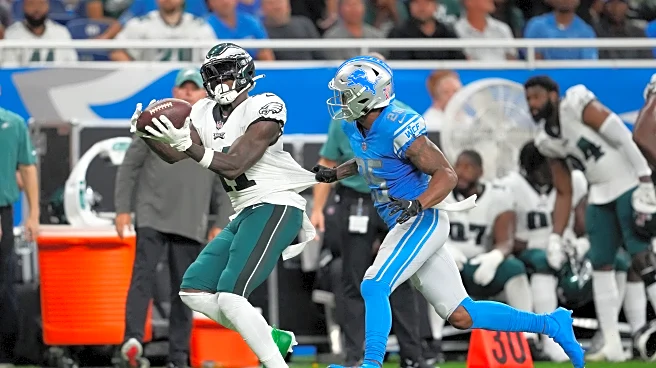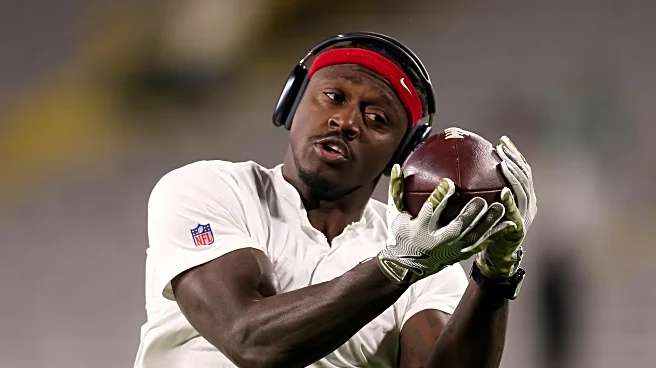The Detroit Lions rediscovered their identity last week, taking advantage of a favorable matchup against a drifting Washington Commanders team to recalibrate before their Week 11 heavyweight showdown with the defending Super Bowl champion Philadelphia Eagles.
Philadelphia came out of its Week 9 bye and suffocated the Packers offense on Monday night, and enters this matchup as one of the healthier teams in the conference. Nick Sirianni—one of 27 head coaches in NFL history to reach two Super Bowls—is
10-0 all-time against the NFC North (including playoffs) and 2-0 against Dan Campbell. His Eagles delivered the highest-deficit loss of Campbell’s tenure in Week 8 of 2021 (44–6) and then beat Detroit 38–35 in the 2022 opener.
Detroit’s offense roared back to form with Campbell taking over play-calling duties last week, but maintaining that edge in a primetime road environment will require owning the line of scrimmage and sustaining a high-efficiency passing script. On the other side, Kelvin Sheppard’s defense must deliver a far more complete performance than it has produced the last two weeks.
This preview breaks down four key statistical matchups that could define the outcome of this NFC title-contender clash.
Note: Unless otherwise indicated, all statistics are sourced from NFL Pro, TruMedia, FTN Fantasy, or Pro Football Reference and exclude garbage time.
Going to Ground & Pound Bread & Butter
Eagles defensive coordinator Vic Fangio has a talented front, loaded with premium investments. But despite the individual talent, Philadelphia has been vulnerable on early downs rushing attacks—especially against under-center runs, where opponents have consistently generated leverage and movement up front
Eagles’ first and second-down run defense — Under center runs
- 4.2 yards/rush (t-15th)
- 41.0% offensive rushing success rate (24th)
- 0.07 EPA/rush (t-15th)
- 12.3% run stuff rate (31st)
- 6.5% explosive run rate (12th)
- 23.6% first down rate (t-25th)
- 1.35 rush yards before contact/rush (20th)
- 2.84 yards after contact/carry (14th)
The Eagles haven’t found consistent answers on early downs against the run, even with multiple first-rounders on the defensive line. They’ve held up slightly better against shotgun rushing looks, but under center has been a persistent weak spot.
Detroit’s early-down offense has been scrutinized heavily over the past month, but they finally controlled those situations against Washington. In Week 10 under center on early downs (excluding garbage time), the Lions logged 23 carries for 154 yards (6.7 per rush), a touchdown, and eight first downs—one of their most efficient outings of the season.
One concept that has specifically stressed the Eagles is outside zone. On early downs they’ve allowed:
- 6.0 yards/rush (31st)
- 22.5% explosive-run rate (31st)
- 42.5% avoided-tackle rate (31st)
Detroit has been more effective on early downs with gap-scheme runs between the tackles—man/duo concepts or with puller-led powers or counters —than outside zone, making this a fascinating stylistic clash. The Eagles boast one of the league’s best interior trios in Jalen Carter, Jordan Davis, and Moro Ojomo, and that strength may be why opponents have had more success stretching them horizontally than challenging them downhill.
Whichever direction Detroit leans, this matchup features a resurgent Lions run game against a talented but inconsistent front—the kind of trench battle that has real Richter-scale potential once the pads start popping.
Goff on Eagles’ wings
Similar to the Lions, the Eagles field one of the better pass defenses in the NFL, with both teams ranking top-five in pass offensive success rate allowed (each under 42%) and top-10 in yards per attempt allowed (each under 7.0). That stability stems from the rapid emergence of second-year defensive backs Quinyon Mitchell and Cooper DeJean, plus strong coverage play from linebackers Zack Baun and rookie Jihaad Campbell. Like Detroit, Philadelphia frequently rotates into single-high, middle-of-field-closed structures post-snap — the Eagles average 19.67 opposing dropbacks per game in those looks (eighth-most), while the Lions sit fifth at 20.78.
One area where Philadelphia hasn’t held up as well is third down when in single-high:
Eagles’ third-down passing defense — Single-high shell
- 6.9 yards/attempt (16th)
- 10.7 air yards/attempt (23rd)
- 68.3 passer rating (14th)
- 39.5% pass offensive success rate (24th)
- -0.08 EPA/dropback (19th)
- 15.8% explosive pass rate (19th)
- 3.5 YAC/completion (2nd)
- 51.0% pressure rate (6th)
Despite the pressure rate and strong tackling after the catch, opponents have been able to convert chains against these structures on money downs. Teams see these looks on 5.4 third-down dropbacks per game, making them a pivotal swing point in any matchup with Philadelphia.
Jared Goff and the Lions’ passing game have been highly efficient overall against single-high, posting a 125.7 passer rating (2nd), 11 touchdowns (2nd), and a 52.1% success rate (6th). But narrowing to third downs only, his production has dipped—with yards per attempt, EPA/dropback, and explosive rate all outside the top 20.
How the Eagles deploy safeties Reed Blankenship and rookie Andrew Mukuba—and how Detroit targets whichever outside corner lines up opposite Quinyon Mitchell (whether Cooper DeJean gets more boundary snaps or it’s Adoree’ Jackson or Kelee Ringo)—will be a central piece of the chess match. Paired with Detroit’s need to find early-down rushing success, generating timely wins on third-down single-high looks may be the deciding factor in a game that could turn into a race to 21+.
Eagles’ pocket pressure
While Detroit is trying to maintain stability up front after a solid showing against Washington—with Kayode Awosika filling in at left guard for the injured Christian Mahogany—Philadelphia enters with one of the NFL’s deepest and most volatile pass-rush rotations. In addition to their interior duo, the Eagles recently returned Nolan Smith from injury, added Jaelan Phillips at the trade deadline (who made an immediate impact in his debut), and continue to see encouraging flashes from second-year edge rusher Jalyx Hunt. It’s a front that can stress protections in ways few teams can.
Eagles’ pass rush since Week 8:
- 48.5% pressure rate (2nd)
- 12.5% sack rate (6th)
- 11.8% blitz rate (30th)
The Eagles’ rush has reached the point in the season where it can swing drives and dictate game flow without relying on extra blitzers. For Detroit—already down Pro Bowler Sam LaPorta—this puts even more emphasis on Dan Campbell and the offensive coaching staff designing answers that protect Jared Goff, having him stay on time with clean reads, and avoid the kinds of hurried decisions this defense thrives on creating.
Eagles’ offense red zone success
In this week’s Pride of Detroit Direct preview newsletter, Jeremy Reisman spotlighted just how lethal Philadelphia has been inside the 20. The Eagles are converting red zone trips into touchdowns at a staggering 81.0%—easily the best mark in the NFL and on pace to join a very short list of teams since 2000 to finish a season above 80%.
Reisman also noted the drop-off from Saquon Barkley and the Eagles’ once-dominant rushing attack this year. That downturn has also been evident in scoring territory.
Eagles’ red zone rushing offense:
- 2.1 yards/rush (25th)
- 47.4% rushing success rate (18th)
- 1.00 yards before contact/rush (11th)
- 1.11 yards after contact/ rush (32nd)
- 18.6% avoided tackle rate (16th)
Given Detroit’s strength along the interior defensive line, the Lions should be able to keep Philadelphia’s ground game from creating chunk gains once they cross the 20. The Eagles are finally back to full strength up front on the offensive line for the first time since Week 2, but maintaining that continuity throughout the game has been a recurring challenge for them this year.
The real driver of Philadelphia’s red zone dominance hasn’t been the run game—it’s been Jalen Hurts as a passer.
Jalen Hurts’ red zone passing metrics:
- 73.9% completion percentage (1st)
- 4.5 yards/attempt (t-6th)
- 103.8 passer rating (8th)
- 54.2% success rate (3rd)
- 0.22 EPA/dropback (10th)
Hurts continues to take heat in the public discourse, but he’s been excellent when the field compresses, particularly with Dallas Goedert (six red zone touchdowns) as a go-to target. Meanwhile, Detroit’s defense has taken a step back in this area. After excelling under Aaron Glenn last year, the Lions are allowing touchdowns on 66.7% of red zone trips (t-25th). Through the air, they’ve given up 13 red zone passing touchdowns with zero interceptions, a 59.1% success rate allowed (18th), and –0.28 EPA/dropback (t-23rd).
Kelvin Sheppard’s unit will need to win early downs, keep Philadelphia from living inside the 20, and when they do get there, force field goals—or even swing momentum with a rare Tush Push stop—to stay in control of this matchup.














